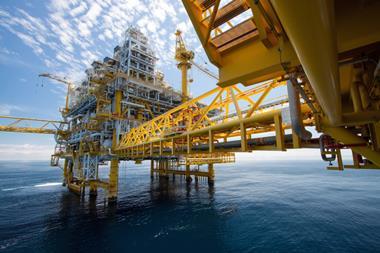The latest report from the Intergovernmental Panel on Climate Change (IPCC), focusing on the physical consequences of human-induced climate change, is valuable for its “specificity” and confirms the urgency to mitigate climate change but also adapt to the impacts it will increasingly have, according to asset managers.
Published yesterday, the IPCC report is the second of three reviews being produced by working groups as part of the IPCC’s sixth periodic assessment (AR6) of the state, science, and outlook of climate change.
The first report, released in August, was about the physical science of climate change and described as a “code red for humanity” by the UN secretary general, with investors saying the findings must spur more action.
Yesterday’s report outlines the physical impacts of climate change, but also how to adapt – for example, providing new insights into nature’s potential to reduce climate risks and improve people’s lives.
“It shows that climate change is a grave and mounting threat to our wellbeing and a healthy planet,” said Hoesung Lee, chair of the IPCC. ”Our actions today will shape how people adapt and nature responds to increasing climate risks.”
He said that the report recognised the interdependence of climate, biodiversity and people and integrated natural, social and economic sciences more strongly than earlier IPCC assessments.
At Lombard Odier, Christopher Kaminker, group head of sustainable investment and Thomas Hohne-Sparborth, head of sustainability research, said that for investors, the report was a call to action, ”both as regards the need for investment in climate mitigation and adaptation efforts, and the real economic consequences of the failure to prepare and adapt”.
Helpful details
They also said the value of the report “lies not so much in the direness of its warnings that should already make for familiar reading, but in its specificity”.
They said the report outlined the numerous changes in the environment that can now be directly attributed, with growing confidence, to the impact of climate change, for example with climate change now disrupting water availability, food production, health and wellbeing, and cities, either via climatological changes, or climate-related flooding and extreme weather events.
In addition, they noted, the report provided more detailed insights into how climate change may play out at a regional level, highlighting, among others, regional risks ranging from marine degradation in North America, to losses in crop production in Europe, and from risks of flooding in Asia to risks to livelihoods of coastal communities in Africa.
This is in addition to cross-cutting risks such as increased water scarcity affecting most regions of the world.
Adaptation, too
Like the Lombard Odier duo, at Robeco, another asset manager that reacted publicly to the report’s release, climate strategist Lucian Peppelenbos said the IPCC report underscored the need for investors to continue to support and push for the net zero transition, but also to invest in climate adaptation.
“Most of the attention from public policy as well as private sector action goes to climate mitigation as opposed to adaptation,” said Peppelenbos, flagging green bonds as a notable example since, in general, only 5-10% of proceeds went to climate adaptation.
“Near-term adaptation certainly is possible, but it has to move higher on the agenda, and it must go beyond building resilient infrastructure,” said Peppelenbos.
He said climate adapation would develop into an important space for investment opportunity, especially in developing countries.
“Tools like the EU taxonomy will help to direct more capital flows to climate adaptation activities,” Peppelenbos said. “Collaboration with development banks and through blended finance approaches must be used to help trigger more private sector investments.”
At industry association Insurance Europe, Nicolas Jeanmart, head of personal and general insurance, said adaptation measures required action from a wide range of stakeholders and that in the first instance, governments needed to initiate the measures.
Reacting to the IPCC report, he said Insurance Europe called on policymakers at local, national and regional levels to ensure that enough attention is paid to climate change adaptation.
At Robeco, Peppelenbos also said investors needed to consider that economic activities and financial assets will be subject to increased physical climate impacts.
“Good forward-looking data on physical risk, in combination with in-house expertise to properly use this data, is going to be a salient factor for investment performance,” he said.
CA 100+ engagement ‘must accelerate’
At the Institutional Investors Group on Climate Change (IIGCC), chief executive officer Stephanie Pfeifer said the IPCC report was a “wake-up call for companies” and a warning for investors.
Investors needed to make sure their investee companies were demonstrating they were adequately addressing physical climate risks, but also ”urgently hold companies that are contributing to the effects of climate change accountable, particularly those relating to the fossil fuel industries”.
”Specifically, investors working through Climate Action 100+ must accelerate engagement and seek net zero aligned transition plans immediately,” said Pfeifer. “This must be backed up by a particular focus on implementation and evidence of progress.”
She also said that governments and policy makers ”have had another shot across the bows, with the IPCC report highlighting the continued lack of priority towards climate mitigation and resilience”.
”Only several months on from COP26, we must ensure that words are followed up through action, which includes implementing policies that will drive change at scale,” she said.
The third IPCC review in the AR6 series is due to be released in May and will focus on how to mitigate further warming. The three reports will then be summarised in an AR6 report in October. Peppelenbos said the AR6 report will be the key reference point for international climate policy negotiations in the coming years.
The last IPCC assessment report (AR5) was published in 2014.
The latest digital edition of IPE’s magazine in now available














